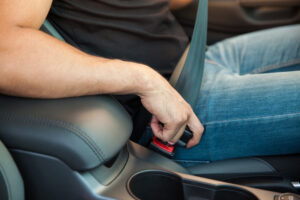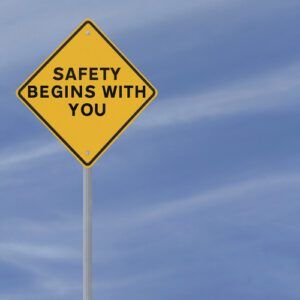Deadly Car Accidents Kill 8 Teens Daily
January 1, 2024
Car Crashes Are a Leading Cause of Teen Death, Authorities Say
Teen drivers are about three times more likely than older motorists to die in fatal motor vehicle wrecks. That’s according to the latest data, which authorities are highlighting as part of Teen Driving Awareness Month in January.

- Teen Driver Accident Statistics
- Why Teen Drivers Are in So Many Deadly Wrecks
- How to Promote Teen Driving Safety & Reduce Fatal Teen Car Accidents
- Will Fatal Teen Accidents Decline in 2024?
This resource can help teens, parents, and anyone sharing the roads with teen drivers be more aware of their role and what they may be able to do to reduce teen driver wrecks and save lives.
Teen Driver Accident Statistics
Recent statistics on teen driver accidents and deaths on the roads reveal some unsettling facts about just how often teens crash, get hurt, and die on U.S. roads — and the preventable causes of many of these wrecks. According to the latest data from federal authorities:
Crash risks are exceptionally high when teens first get their driver’s licenses. 16 year olds are about 1.5 times more likely to be in a wreck than drivers who are 18 and 19.
- Male teens are about 3 times more likely than female teens to be killed in deadly car crashes.
- Roughly half of all teen driver deaths happen on a Friday, Saturday, or Sunday, meaning near or on the weekend.
- At night, the risk of teen driver death spikes wildly. That’s because teen drivers are about 3 times more likely than older drivers to be in a deadly wreck at night. In fact, roughly 44% of teen crash deaths happen between 9 p.m. and 6 a.m.
- About 56% of teens killed in motor vehicle accidents were not wearing seatbelts at the time of the collision.
- Speeding is involved in many teen traffic deaths. Nearly 1 in 5 fatal teen car accidents with a female driver involve speeding as a contributing factor; with a male teen in the driver’s seat, speeding is involved in more than 1 in 3 fatal crashes.
- When it comes to teen drivers killed in wrecks, nearly 1 in 3 are under the influence of alcohol.
- Teens holding commercial driver’s licenses face extraordinarily high injury and death risks on the roads. In fact, teen truckers are about 6 times more likely than older truckers to be in fatal crashes.
- Deadly teen driver accidents cost an estimated $41 billion each year in terms of life lost, medical costs, and more.
Staggering and insightful, these teen driver accident statistics may have a silver lining. By showing when and how many teen crash deaths happen, these statistics also start to highlight opportunities for taking action to prevent as many of these accidents as possible.
Why Teen Drivers Are in So Many Deadly Wrecks

- Distraction: About 9% of teen drivers who are killed in auto accidents were distracted at the time of the crash. In many cases, cellphone use or other attempts to multitask while driving are to blame.
- Risky behaviors: Teen motorists are more likely than older drivers to tailgate, speed, zigzag in and out of traffic, and engage in other risky behaviors. Sometimes, this is due to a lack of experience behind the wheel and limited knowledge of how dangerous their risks can be; other times, these poor driving choices may be the result of other bad decisions, like driving while under the influence of drugs or alcohol.
- Teen passengers: Driving can be a rite of passage and a “status” symbol for teens. That can mean teen drivers are often traveling with teen passengers and that teen drivers are more susceptible to speeding or engaging in other risky behaviors because they want to please or impress their passengers.
- Alcohol use: Even though teens aren’t legally permitted to drink alcohol, many teen drivers are getting behind the wheel drunk, and some are dying. In fact, about 17% of female teen drivers and 24% of male teen drivers killed on the roads were impaired by alcohol at the time of the collision.
- Less experience on the roads: Despite graduated driver’s license programs and behind-the-wheel training, teens generally have less experience driving, especially driving in less-than-ideal conditions, like at night, in adverse weather, or with poor road conditions. On top of that, teen drivers don’t have as much experience making split-second calls in quickly changing driving conditions, particularly when they have seconds to make a choice to avoid a crash. All of that can mean teens don’t make the right choices behind the wheel, even when they’re doing their best, simply because they’re more inexperienced drivers.
For these and other reasons, roughly 2,800 teens were killed on America’s roads in 2020 (the most recent year for which complete data is available). Over the past decade, those deaths have surged more than 23%, raising serious concerns that not enough is being done to address this growing problem.
How to Promote Teen Driving Safety & Reduce Fatal Teen Car Accidents
While these tips are meant for teen motorists, parents of teens can model and encourage safe driving behaviors in teens too. Additionally, many of these tips apply to driving safety in general, making them relevant for nearly any motorist on the roads.
1. Always buckle up.

Since you can’t control other drivers and you never know when a wreck could happen, wearing a seatbelt is one of the simplest and most effective ways to proactively protect yourself whenever you’re driving as a teen motorist or you’re riding with one as a passenger.
2. Stay focused on driving & the roads.
Avoid distractions behind the wheel. Commit to paying attention to the car, the roads, and your evolving driving environment, so you’re always ready to respond ASAP.
Consider using distracted driving apps if necessary to limit phone notifications and the ability to use cellphones while driving.
3. Never speed.
Pay attention to the posted speed limits and abide by them. Reduce your speed whenever:
- The weather’s limiting visibility or making the roads slick.
- You’re traveling by highway work zones.
- Conditions are otherwise tricky, complex, or out of the norm.
Keep in mind that speeding is a behavior that tends to increase with time, usually as drivers gain some confidence pushing these limits. So, don’t fall down this slippery slope of risk, even if you’re running late or caught in traffic. It’s better to be a little late than put your life and others at risk by speeding.
4. Only drive when sober.
Don’t get behind the wheel if you’ve been drinking alcohol or using any drugs, including any impairing over-the-counter or prescription medications. Driving while intoxicated can:
- Reduce reaction times
- Interfere with perception
- Invite poor judgment and reasoning.
So, never drive while impaired, and commit to driving only when you’re sober. Similarly, do not ride with teen drivers who are under the influence or impaired in any way. Better yet, encourage these motorists to get a ride and NOT risk driving until they’re sober.
5. Don’t transport extra passengers.

- Teen drivers with 2 passengers under 21 double their crash risks.
- Add a third teen passenger (or more), and the crash risk quadruples.
So, if you’re a teen driver, don’t become the taxi for your friends or volunteer to cart your buddies around. Also, don’t make plans to joyride with friends.
If you’re the parent of a teen driver, set up some rules for who a teen driver can have as a passenger and what’s off limits. Being proactive with these rules and talking about why they’re in place can help everyone get and stay on board with them.
Will Fatal Teen Accidents Decline in 2024?
Only time may reveal the answer to this question. For now, a couple of things remain clear — teen deaths on the roads of Houston, The Woodlands, Dallas, Austin, Lakeway, Bee Cave, Fort Bend County, Texas, and the U.S. aren’t going to stop by themselves, and every driver can play a role in improving safety and reducing crash risks for teens and all roadway travelers.

 Crash risks are exceptionally high
Crash risks are exceptionally high